During the nineteenth century, some European and American explorers witnessed American Indian ceremonies which they found amazing. When these outside observers attempted to describe what they had seen to others, they were often met with disbelief, skepticism, and even ridicule. Four of these “amazing” ceremonies are described below.
Mandan:
In the nineteenth century, the Mandan were an agricultural people who lived in permanent villages along the Missouri River in what is now North Dakota. Since they lived in permanent villages, they were often trade centers and attracted traders from both English and Canadian companies (Hudson’s Bay Company and North West Company) and American companies.
Artist George Catlin, who had painted numerous portraits of Indians who had visited Washington, D.C., felt that the American public was ignorant about Native Americans. He made a journey up the Missouri River to paint the portraits of the Indians and to record their ways. He sought to show the public, through his paintings, a true picture of Indian life. He wrote that
“nothing short of the loss of my life, shall prevent me from visiting their country, and of becoming their historian.”
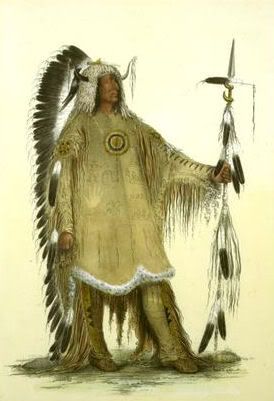
Catlin’s portrait of Mandan chief Four Bears is shown above.
In 1832, Catlin spent time in the Mandan villages, painting portraits and pictures of their ceremonies. Here he witnessed the Mandan Okipa ceremony. This was a four-day ceremony to ensure that the buffalo remain plentiful and that catastrophes be averted. It was a ceremony which reinforced the relationship between the supernatural and the people. The ceremony reenacted the creation of the earth and the history of the Mandan people.
During this ceremony, some of the men would fast. They would then have wooden skewers placed in their chests so that they could be suspended from the poles in the Okipa lodge by thongs which were fastened to the skewers. Afterwards Catlin wrote:
“Thank God, it is over, that I have seen it, and am able to tell the world”
The public, however, refused to believe Catlin’s account of this ceremony.
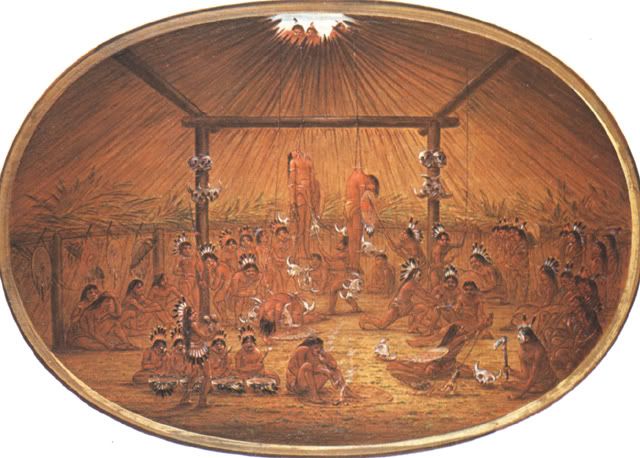
Catlin’s painting of the Okipa ceremony is shown above.
Chippewa:
At the time when they were first encountered by the Europeans, the Chippewa (who called themselves Anishinabe and who are also known as Ojibwa) were living in the Great Lakes area. One of the Chippewa ceremonies was, and still is, the Spirit Lodge or Shaking Tent. A small lodge is constructed by the medicine man and his helpers. After the medicine man has entered the structure, usually by crawling through a small gap in the bottom, the tent will begin to shake violently. Voices of the spirits-voices which are easily distinguishable from that of the medicine man-will then be heard. The people on the outside of the lodge will ask questions-sometimes about health, the future, finding lost objects-which the spirits answer through the medicine man.
For outsiders, the Spirit Lodge ceremony is sometimes seen as some type of magic trick or illusion. In 1858, on the Chippewa White Earth Reservation in Minnesota, a skeptic wagered a large amount that a medicine man would not be able to perform satisfactorily. A small lodge was erected, the medicine man stripped to a breech cloth, was securely tied, and left in the lodge. A committee of reliable people monitored the lodge. After some loud thumping noises within the lodge, the medicine man told the skeptic to go to a house to get a certain rope. The skeptic went to the house, found the rope, and returned with it. He opened the lodge and found the medicine man, untied, smoking his pipe. There was no rope in the lodge-it was the one the skeptic had found in the house. The skeptic paid the wager.
Cheyenne:
By the beginning of the nineteenth century, the Cheyenne, who had been an Eastern Woodlands tribes living in the Great Lakes area two centuries earlier, were living on the Northern Plains of Montana and the Dakotas. By the mid-point in the century, the Cheyenne had divided into two tribes: the Northern Cheyenne who stayed on the Northern Plains and the Southern Cheyenne who had migrated south.
In 1867 Northern Cheyenne medicine man, Ice, conducted a ceremony in which he disappeared. The ceremonial area was prepared by digging a hole large enough to hold him and then a tipi was erected over it. With members of one of the warrior societies guarding the outside of the tipi, Ice and some others conducted a ceremony inside the tipi. Ice, whose hands were tied behind his back, then got into the hole and had the others place large stones in the hole so that he was totally covered over. Everyone then left and Ice sang a song. When they came back into the tipi and removed the rocks, Ice was not present. They put the rocks back in the hole and after a while they heard him call to them. They returned inside the tipi, removed the rocks, and found Ice inside the hole.
Hopi:
The Hopi have lived in their agricultural villages in what is now Northern Arizona for many centuries. The Hopi villages have a complex ceremonial cycle to spiritually assist the growing of their crops. In November, they have a sixteen-day Wuwuchim Ceremony in which they ask for the germination of all forms of life.
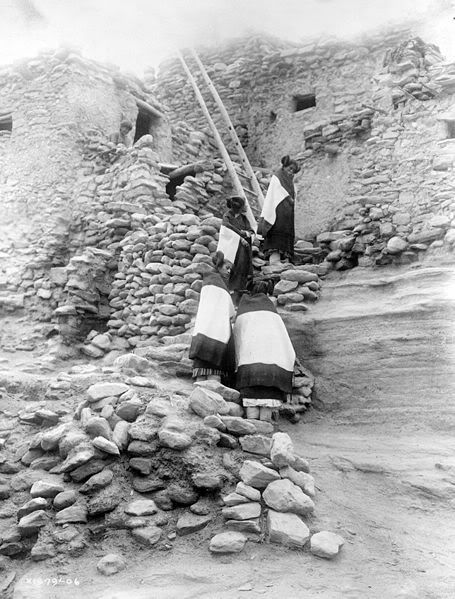
While taking notes in a Hopi kiva during the 1897 Wuwuchim Ceremony, anthropologist Jesse Walter Fewkes was warned by the elders to go home and lock his door because Masauwuh, a god who carries a flaming torch, was coming. Later, in his locked house, Fewkes was visited by a tall man who simply appeared in the house. The stranger lit a cigarette with a flame from his mouth. The two-Fewkes and the stranger-played like children all night. Fewkes related this story to the Hopi elders in the morning and then quickly left the Hopi mesas.
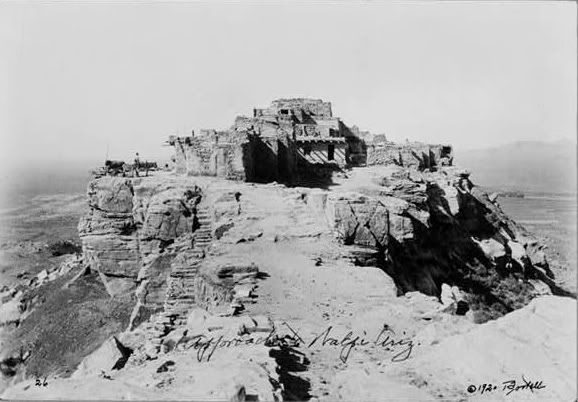
The Hopi village of Walpi is shown above.
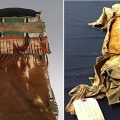
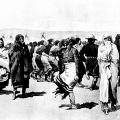
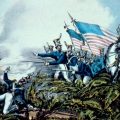
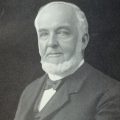
Leave a Reply